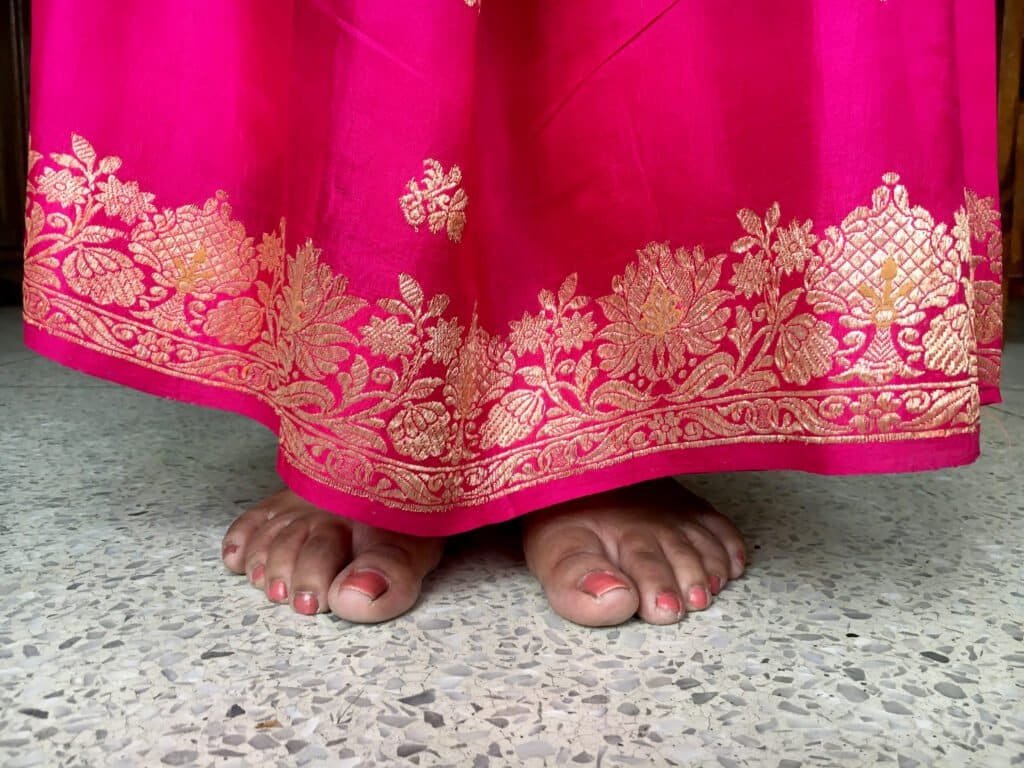TEXT BY SONA SINGH
PHOTOGRAPHS BY AANCHAL MALHOTRA
New Delhi, India
Over the years, I have been trying to piece together and understand the life and times of my long deceased grandmother, Chandrika Devi, through stories and anecdotes of the people who once knew her. I have performed this exercise almost ritualistically since my childhood, for I always felt like I missed out making memories with my parental grandparents, as other children my age often did. Having never known my grandparents in their lifetime, I would try to befriend them in their death, conjuring up scenarios. While coming up with images of Baba was easy as there were quite a few photographs of him around the house, invoking my grandmother, Mama would often end in failure.
What can I say about the woman whose only memory for me is a grainy black and white photograph? Perhaps that she loved ittar; or that two of her children died in their infancy. I can say that she was confined to the bed with asthma after the birth of her youngest son, my father. And I can say that her eldest son and she would often indulge in paan, zarda, hookah, and cigarettes together, after he got back from work in the evenings in Calcutta.
Chandrika Devi or Kakka as everyone fondly called her was born in a well-to-do family in village Chandpura in the Vaishali district in Bihar. Chandrika was bequeathed a huge dowry upon marriage and her wedding trousseau was the talk of the village. Fourteen years after her sudden demise (in 1968) when my grandfather got the servants to bring the boxes containing her belongings down from the attic in 1982, they found that the clothes inside had decayed and the only traces of what remained of her possessions was the putrid smell of fabric that had grown musty owing to years of constant neglect. And so, for as long as I could remember, I hoped there to be something, anything else apart from the black and white photo that I could associate with her.
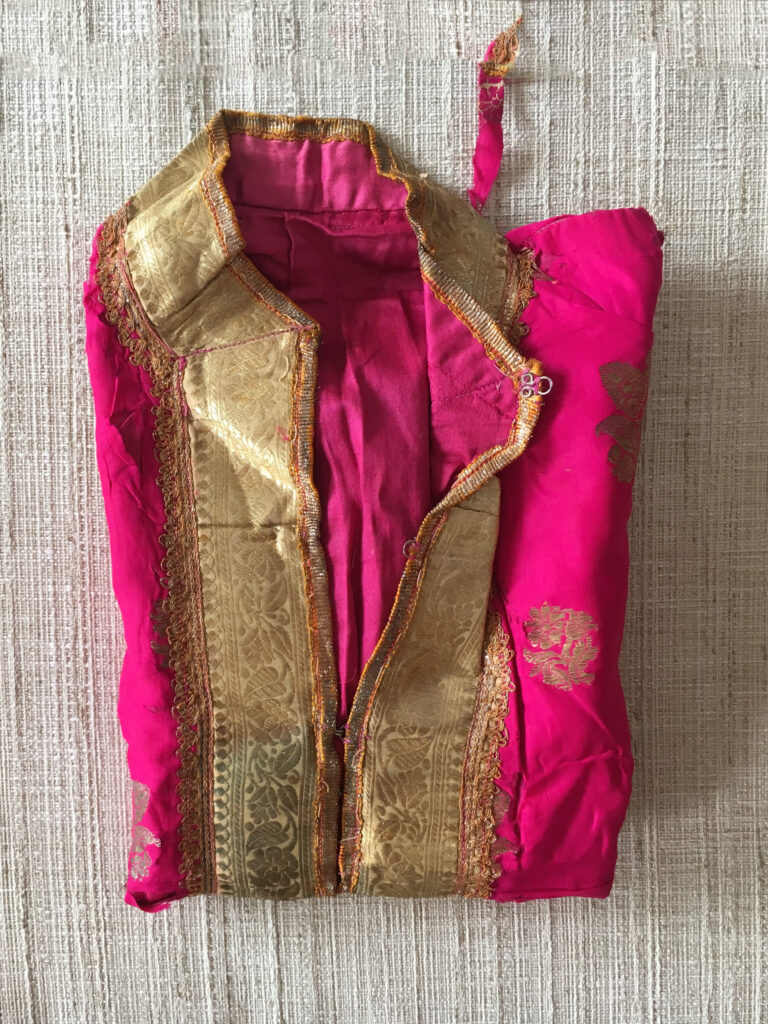
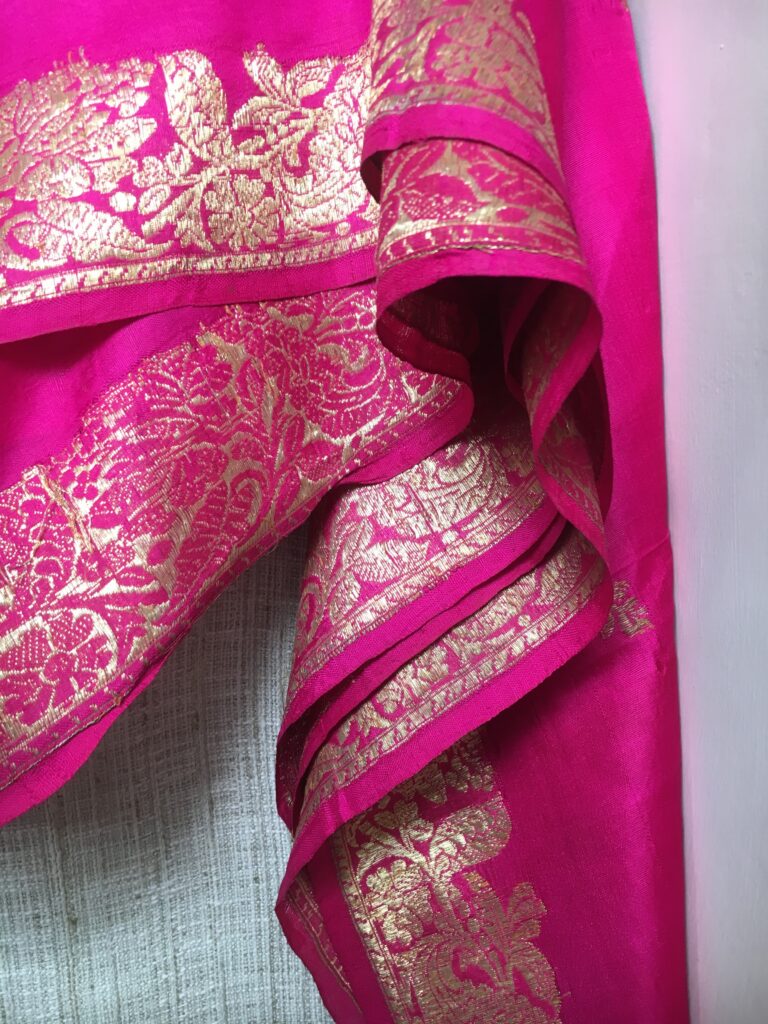
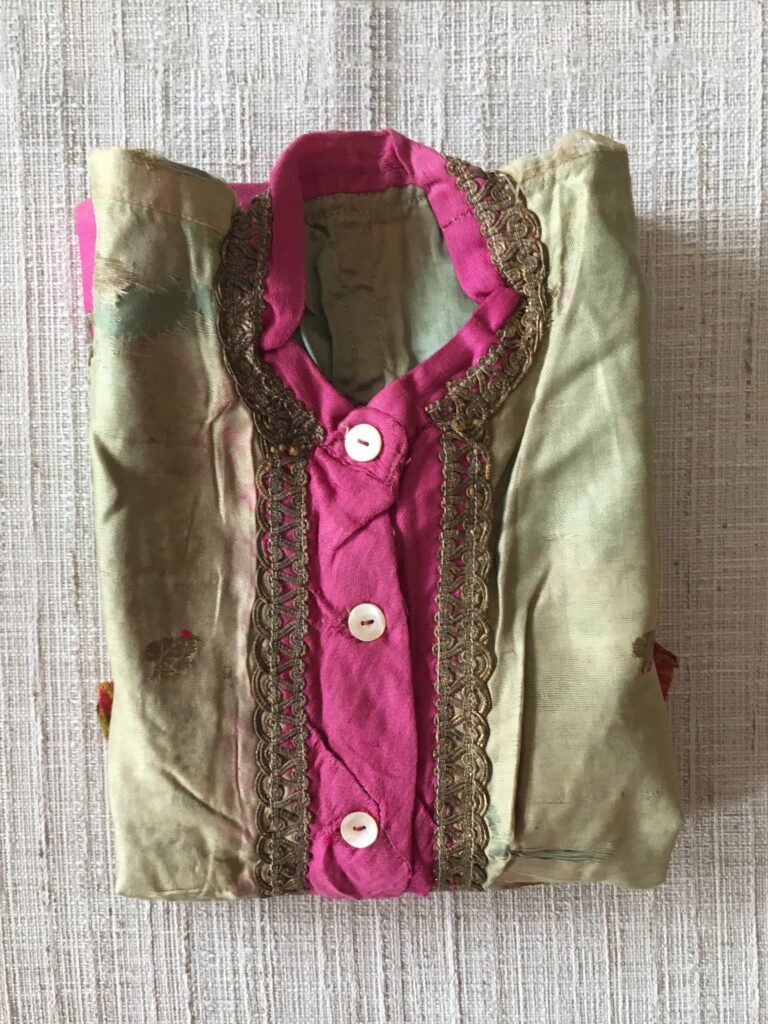
A few years ago, I serendipitously came across an old box that contained a motley group of items like property papers, a silver ittardaan, a few pieces of fabric and two banarasi blouses that had belonged to her. Recently, I also chanced upon a banarasi saree and its matching chadar that were in the possession of my aunt, along with an accompanying tale of love and blood. My aunt, Neelam, tells me that this silk banarasi saree had been a gift to Chandrika Devi from my grandfather’s side and she wore it at her bidai, when she left her father’s home for her husband’s. Since Chandrika Devi’s eldest daughter died of snakebite, Neelam, the first to get married, inherited the saree and wore it and the chadar during her own bidai, bringing the tradition beautifully full-circle. As Chandrika Devi died soon afterwards, Neelam never wore this garment again, wrapping it securely in mulmul cloth and keeping it ensconced between layers of clothes inside a Godrej almirah for years. Later, Neelam’s daughter Rangila wore the chadar in her wedding as a blessing from the nani long passed. Most recently, almost 40 years since my grandmother’s death, my mother decided to borrow this heirloom saree and wear it for my brother’s wedding. For her, this gesture was a way to connect to the mother-in-law she had never met but whose blessings she sought fervently.
This was when I first saw the saree and chadar and fell irrevocably in love with the garments. It was also the time when I realized that one of the blouses that had been found in a box a few years ago had been the original set that came with this saree. As both my grandmother and aunt were different sizes, it appears that while Neelam got the saree and chadar, its blouse was kept in a box and long forgotten, only to be found years later. While in a decrepit condition, the blouse is a living embodiment of the fashion sensibilities of how women in the early 1930s liked their garments to be stitched.

The saree and its matching chadar are in a deep Gulabi pink colour and have been woven in the finest banarasi weaving technique – Kadhua or Kadwa, which means kadha hua or embroidered. This is a laborious method of weaving motifs independently onto the fabric and thus, there are no loose threads on the back. Using this technique, a variety of motifs of different sizes, colours and textures can be woven onto the garment. And while it may take four to five weeks to get the piece ready on the handloom, the final product is exquisite.
The border of the saree has botanical motifs in gold along with singular dainty floral patterns spread across the garment. At the corner of the pallu are two paisley designs, which are known as the Koniya motif in the banarasi-weaving parlance and gives a hint of the beautiful craftsmanship of this saree. There are yellow meenakari butis carved over the designs. In traditional banarasi weaves, meenakari technique is used to add different colors to the design apart from the zari. The chadar is made in the same design and colour and must have been used to cover the head.
Given the number of years that have elapsed since my grandparents got married, sometimes in the early 1930s, the saree, which is now almost 90 years old, is in a fabulous condition. My father talks about an incident from his childhood in the early 1960s when his mother was still alive, when pheriwallas used to move from village to village to gather collectibles and other semi-precious items. He remembers that Chandrika Devi sold off one of her other banarasis to a pheriwala and he paid a sum of Rs 250 for the same. Immediately after paying the money, my father says he saw the man light a match to the garment and walk away with all the zari that had melted off. Zari threads adorning the fabric were made of pure gold, which, sadly, appeared to be far more valuable to the pheriwalla than the saree itself, despite its historic weaving technique. Lighting the fabric on fire was also an age-old test to see whether the zari work on the saree was real or not.
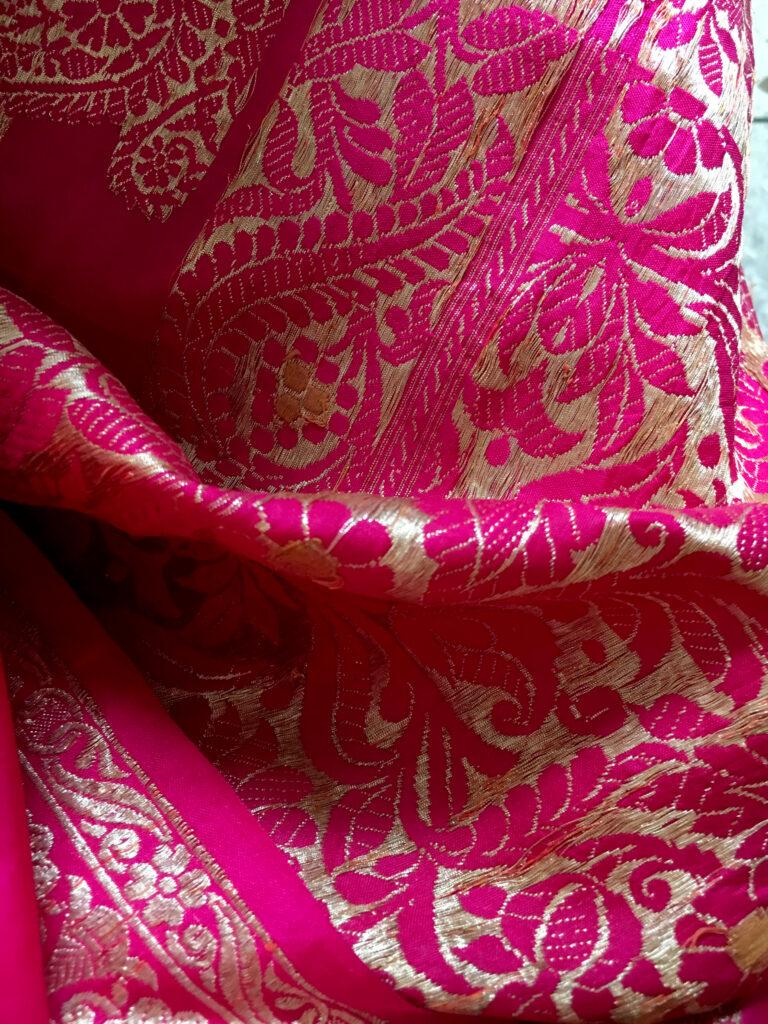
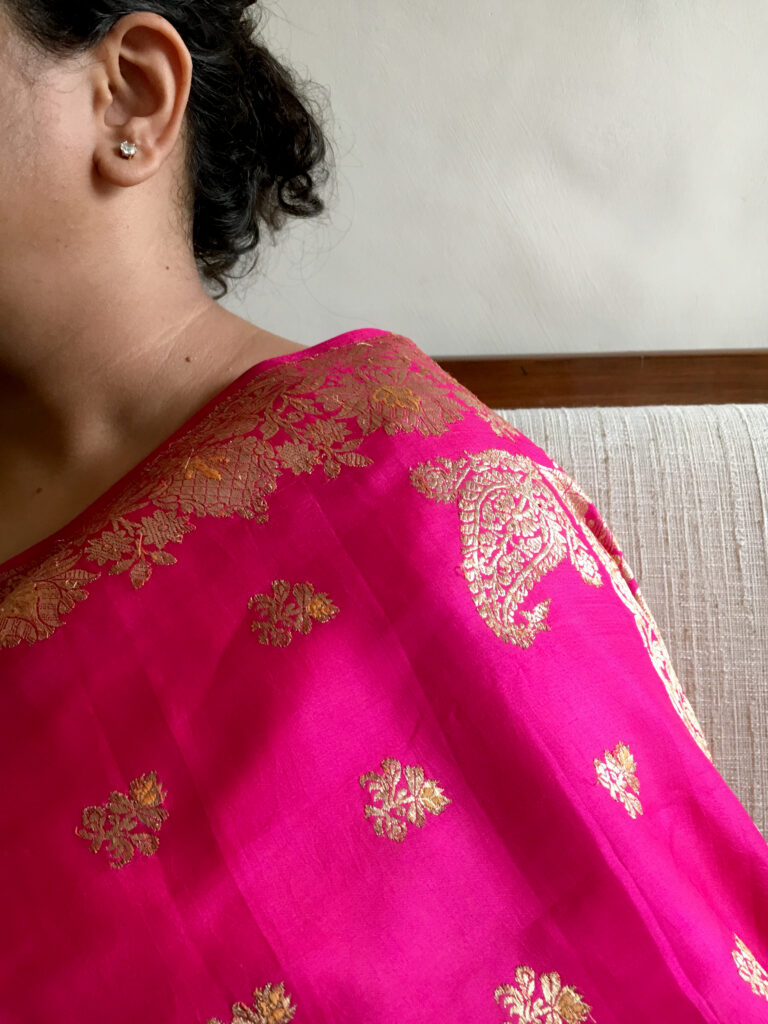

When I saw the saree for the first time, I could not resist asking my aunt to lend it to me, which she agreeably did, without any questions asked. She later told me that by allowing me to keep the saree she was acting as a link between Chandrika Devi and her granddaughter, an exercise that filled her with immense satisfaction and pleasure.
On certain days, I take out this garment in the lightest of silks and feel it against my hands, soft as butter. If I close my eyes tight enough, I can picture the young, demure bride Chandrika Devi, wearing this saree and getting ready to cross the threshold of her parents’ home. She would have a short life, dying at the age of 42, leaving her youngest bereft of a mother’s love. She would experience sickness and loss, but would bear them stoically. For solace she would read the Ramayana and compose letters to her loved ones. A lot of time would be spent in planting the mango orchards for the future grandchildren and smoking the hookah with equal aplomb. Years after her passing away, when memories of her had faded in the minds of those who had once known her, a whiff of ittar or the touch of a fabric would once again remind them of the grand woman who had shaped their lives.
